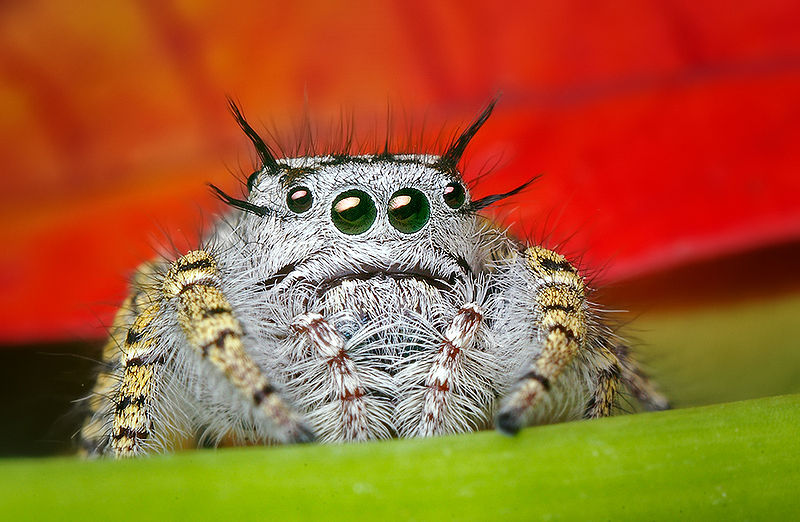Science News
Blurry Spider Vision

With around 5,000 described species, jumping spiders jump out at you as the largest family of spiders.
They have fantastic vision (their eight eyes might be one reason), and as their name suggests, they can make quick leaps to catch prey and sometimes even escape predators. Scientists have long wondered how the jumping spiders jump so accurately when judging distances. Ed Yong explains the mystery in Discover:
Other animals have many different ways of judging depth, but none of them apply to jumping spiders. Humans mostly rely on our two eyes. Each gets a slightly different view of the world and our brain uses these differences to triangulate the distance to objects in front of us… Chameleons can judge distance by sensing how much they have to focus their eyes to bring an object into sharp relief… Some insects judge distance by shaking their heads from side to side, which makes nearby objects move further across their field of view than far ones.
But none of these tactics work for jumping spiders.
Researchers at Osaka City University in Japan decided to dive deeper into the retina of the jumping spider’s largest eyes—the two in the front. This retina has four layers of light-sensitive cells (our retina only has one layer). Research in the 1980s revealed that the top two layers are sensitive to ultraviolet light and the bottom two to green light. In addition, while the very bottom layer is able to focus sharply on an object, the next layer up perceives blurred objects, rendering everything a bit fuzzy for the spider.
The Japanese scientists had a hunch that these lower layers work together to help the spider judge distance more accurately. So they went to the lab and tested the jumping spiders’ jumps in different light settings. In green light, the spiders were able to accurately perceive and leap to their target. But in red light, they missed. You can see the experiment here.
The researchers concluded, according to ScienceNOW, that:
The amount of blur depends on an object’s distance from the spider’s eye. The closer it is, the more out of focus it is on the second retina. Meanwhile the first retina always gets a sharp image. By comparing the images on both layers, the spider can gauge depth with a single unmoving eye.
The study was published in Science last week.
Scientific American reports that this research extends far beyond jumping spiders:
The new study also could add to research beyond the animal world. “Jumping spiders may be a real-life example of ‘depth from defocus,’ a notable depth measurement technique that is being developed for computer vision,” [lead author Takashi] Nagata and his co-authors noted.
Image: Opoterser/Wikipedia